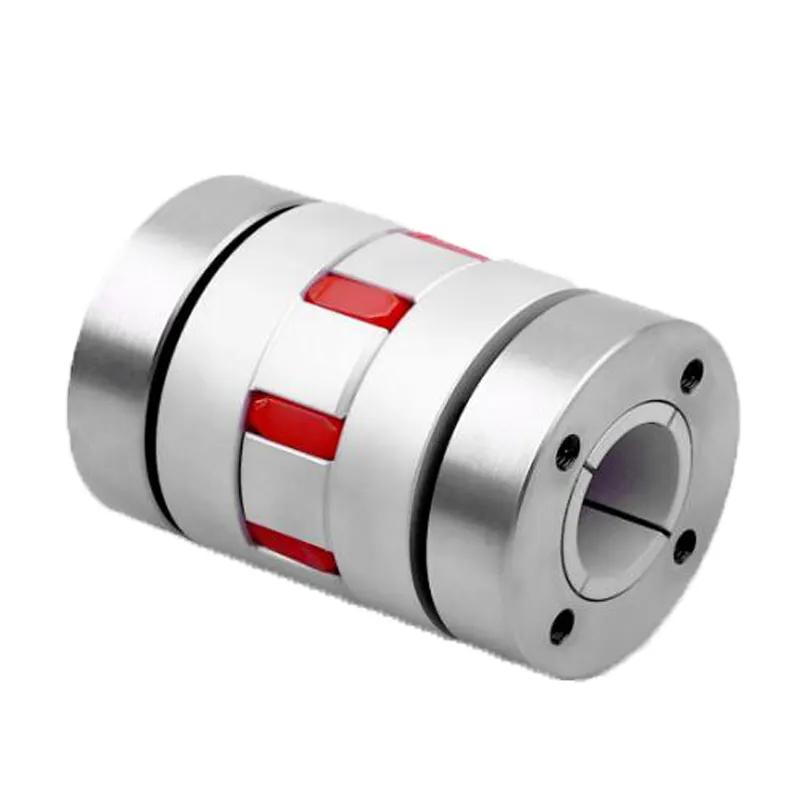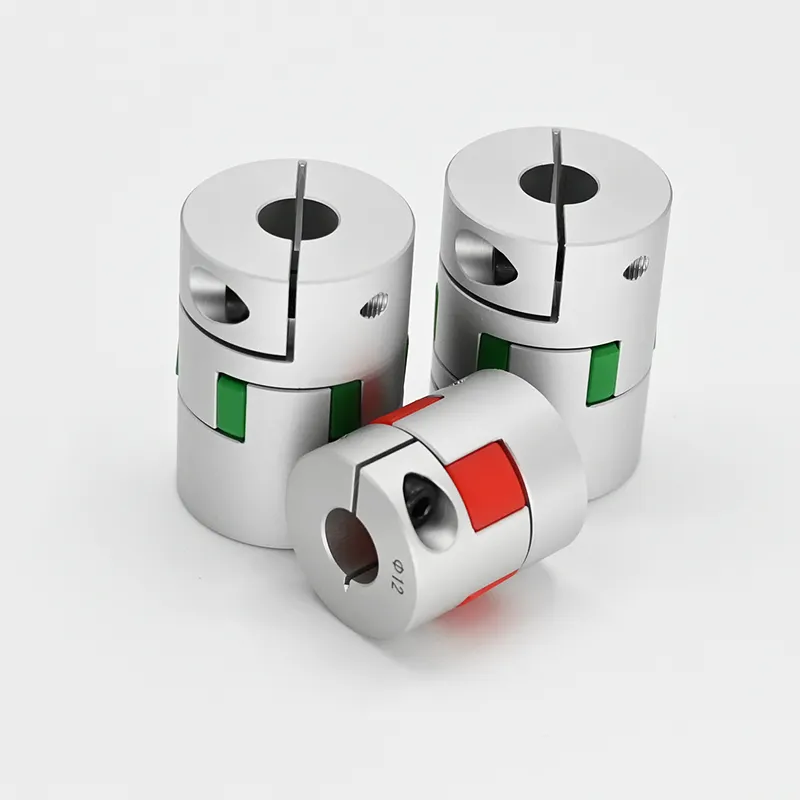Product Description
Product Description
COUPLINGS
| HRC | FCL | Chain coupling | GE | L | NM | MH | Torque limiter |
| HRC 70B | FCL90 | KC4012 | GE14 | L050 | NM50 | MH45 | TL250-2 |
| HRC 70F | FCL100 | KC4014 | GE19 | L070 | NM67 | MH55 | TL250-1 |
| HRC 70H | FCL112 | KC4016 | GE24 | L075 | NM82 | MH65 | TL350-2 |
| HRC 90B | FCL125 | KC5014 | GE28 | L090 | NM97 | MH80 | TL350-1 |
| HRC 90F | FCL140 | KC5016 | GE38 | L095 | NM112 | MH90 | TL500-2 |
| HRC 90H | FCL160 | KC6018 | GE42 | L099 | NM128 | MH115 | TL500-1 |
| HRC 110B | FCL180 | KC6571 | GE48 | L100 | NM148 | MH130 | TL700-2 |
| HRC 110F | FCL200 | KC6571 | GE55 | L110 | NM168 | MH145 | TL700-1 |
| HRC 110H | FCL224 | KC8018 | GE65 | L150 | NM194 | MH175 | |
| HRC 130B | FCL250 | KC8571 | GE75 | L190 | NM214 | MH200 | |
| HRC 130F | FCL280 | KC8571 | GE90 | L225 | |||
| HRC 130H | FCL315 | KC1571 | |||||
| HRC 150B | FCL355 | KC12018 | |||||
| HRC 150F | FCL400 | KC12571 | |||||
| HRC 150H | FCL450 | ||||||
| HRC 180B | FCL560 | ||||||
| HRC 180F | FCL630 | ||||||
| HRC 180H | |||||||
| HRC 230B | |||||||
| HRC 230F | |||||||
| HRC 230H | |||||||
| HRC 280B | |||||||
| HRC 280F | |||||||
| HRC 280H |
Catalogue
Workshop
Lots of coupling in stock
FAQ
Q1: Are you trading company or manufacturer ?
A: We are factory.
Q2: How long is your delivery time and shipment?
1.Sample Lead-times: 10-20 days.
2.Production Lead-times: 30-45 days after order confirmed.
Q3: What is your advantages?
1. The most competitive price and good quality.
2. Perfect technical engineers give you the best support.
3. OEM is available.
/* March 10, 2571 17:59:20 */!function(){function s(e,r){var a,o={};try{e&&e.split(",").forEach(function(e,t){e&&(a=e.match(/(.*?):(.*)$/))&&1

Differences between Elastomer and Metallic Jaw Coupling Designs
Jaw couplings are available in two primary designs: elastomer jaw couplings and metallic jaw couplings. Each design has its own set of characteristics and advantages:
- Elastomer Jaw Couplings: Elastomer jaw couplings, also known as flexible jaw couplings, feature an elastomeric spider element that sits between the two hubs. This spider element is typically made of materials like polyurethane, rubber, or other flexible polymers. The elastomeric material provides the coupling with flexibility, allowing it to compensate for shaft misalignment, angular, parallel, and axial, as well as dampen vibrations and shocks. Elastomer jaw couplings are popular for their ability to protect connected equipment from mechanical stresses and enhance overall system performance. They are commonly used in applications where some misalignment is expected or in systems with shock loads and vibrations. Additionally, elastomer jaw couplings are known for their relatively lower cost compared to metallic designs.
- Metallic Jaw Couplings: Metallic jaw couplings, also known as rigid jaw couplings, are constructed entirely from metal, usually steel or aluminum. Unlike elastomer couplings, metallic jaw couplings do not have an elastomeric spider element and offer a more rigid connection between the two hubs. As a result, they are less forgiving of misalignment and do not provide the same level of vibration dampening as elastomer couplings. However, metallic jaw couplings offer higher torque capacity and are better suited for applications where precise shaft alignment is critical. They are commonly used in systems that require high torque transmission and minimal torsional flexibility. Additionally, metallic jaw couplings are well-suited for environments with high temperatures or exposure to chemicals, as they can withstand harsher conditions compared to elastomer designs.
The choice between elastomer and metallic jaw couplings depends on the specific requirements of the application. If flexibility, misalignment compensation, and vibration dampening are crucial, elastomer jaw couplings are preferred. On the other hand, when high torque transmission, precise alignment, and durability in challenging environments are needed, metallic jaw couplings are the better option.

Can jaw couplings be used in servo motor and stepper motor applications?
Yes, jaw couplings can be used in both servo motor and stepper motor applications, and they are commonly employed in such systems. The key factors that make jaw couplings suitable for these motor types are their ability to handle misalignment, their torsional flexibility, and their compact and lightweight design.
In servo motor applications, jaw couplings are chosen for their high precision and responsiveness. Servo motors require couplings that can transmit torque with minimal backlash and provide accurate motion control. Jaw couplings achieve this by maintaining a tight fit between the elastomer spider and the coupling hubs, minimizing backlash and ensuring precise torque transmission. The elastomer spider also dampens vibrations and shocks, contributing to smoother motor operation and increased system stability. Additionally, the compact size and low inertia of jaw couplings make them ideal for high-speed servo motor applications where quick acceleration and deceleration are crucial.
In stepper motor applications, jaw couplings are preferred for their ability to handle misalignment. Stepper motors often have shaft misalignment due to manufacturing tolerances or other factors, and jaw couplings can accommodate both angular and parallel misalignment without imposing significant additional loads on the motor bearings. This helps to reduce wear and extend the life of the motor and coupling components. Moreover, stepper motors are commonly used in open-loop systems, where precise positioning and motion control are essential. Jaw couplings' low backlash characteristics aid in achieving accurate positioning and eliminating any motion inaccuracies that might arise due to backlash in the coupling.
Overall, jaw couplings are well-suited for servo motor and stepper motor applications due to their precision, ability to handle misalignment, torsional flexibility, and low inertia. When selecting a jaw coupling for a specific motor application, it is essential to consider factors such as torque requirements, operating conditions, and motor specifications to ensure optimal performance and reliability in the system.

Advantages of Using Jaw Couplings in Mechanical Systems
Jaw couplings offer several advantages in mechanical systems:
- Misalignment Compensation: Jaw couplings can tolerate angular, parallel, and axial misalignments between connected shafts, reducing the need for precise alignment during installation.
- Vibration Damping: The elastomeric spider in the jaw coupling absorbs shocks and vibrations, providing smoother operation and extending the life of connected equipment.
- Backlash-Free: Due to the tight fit between the jaws and the spider, jaw couplings are virtually backlash-free, enabling more accurate and responsive motion transfer.
- High Torque Capacity: Jaw couplings can handle high torque loads, making them suitable for a wide range of industrial applications.
- Easy Installation: With a simple design and few components, jaw couplings are easy to install and maintain.
- Cost-Effective: Compared to other types of couplings, jaw couplings are relatively cost-effective, providing reliable power transmission at a lower cost.
- Fail-Safe Design: In the event of a spider failure, the jaws can still maintain some torque transmission, allowing for limited operation and preventing sudden breakdowns.
Due to these advantages, jaw couplings are widely used in pumps, motors, fans, and various industrial machinery where misalignment, vibration, and torque transmission are critical factors.


editor by CX 2024-02-12
